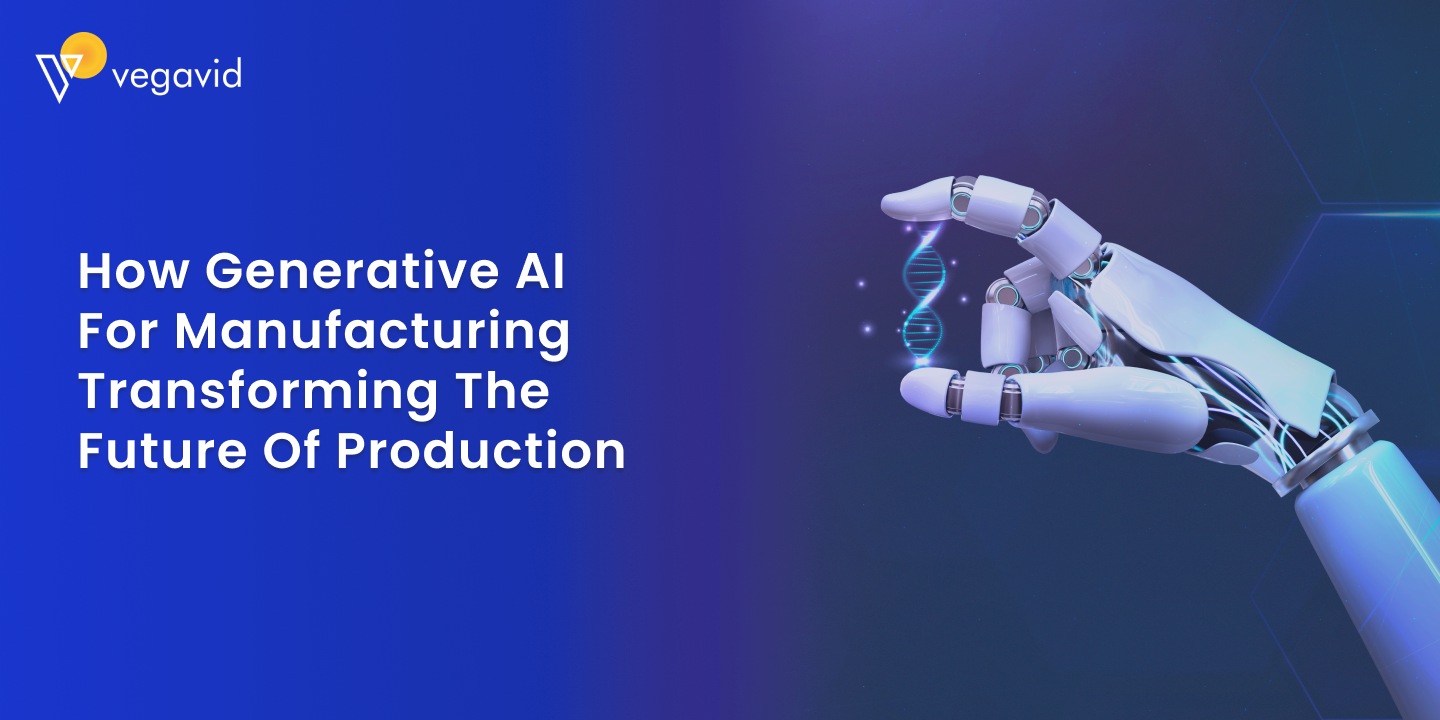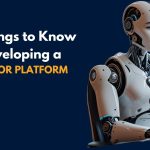
In the rapidly evolving landscape of technology, Generative AI is making waves across various industries, and manufacturing is no exception. Within the first 100 words, we’ll explore how this advanced form of artificial intelligence is revolutionizing production processes, enhancing efficiency, and fostering innovation in manufacturing. From optimizing supply chains to designing complex components, generative AI is poised to be a game-changer.
In this blog, we will delve into the specifics of how generative AI is used in manufacturing, its benefits, and how companies can implement this technology to stay ahead of the curve. By the end of this article, you will have a comprehensive understanding of generative AI’s potential in manufacturing and actionable steps to integrate it into your business.
What is Generative AI?
Generative AI refers to a type of artificial intelligence that can create new content, designs, or data from scratch. Unlike traditional AI, which relies on pre-existing data, generative AI uses algorithms to generate novel solutions and ideas, making it particularly valuable in fields like design, art, and now, manufacturing.
In manufacturing, generative AI can be used to design products, optimize processes, and even predict potential issues before they arise. By leveraging vast amounts of data, these AI systems can generate designs that meet specific criteria, improve production efficiency, and reduce waste.
How Generative AI is Transforming Manufacturing
Here are 3 popular ways in which generative AI is transforming the manufacturing industry:
Design Optimization
Generative AI plays a crucial role in design optimization within manufacturing. Traditional design processes often involve trial and error, which can be time-consuming and costly. However, with generative AI, manufacturers can input specific requirements and constraints, and the AI will generate multiple design options that meet those criteria.
For example, in the automotive industry, generative AI can be used to design lightweight yet durable components that improve fuel efficiency without compromising safety. This process not only accelerates design time but also results in innovative products that might not have been possible through traditional methods.
Supply Chain Efficiency
Another significant application of generative AI in manufacturing is improving supply chain efficiency. By analyzing vast amounts of data, generative AI can predict demand, optimize inventory levels, and even identify potential bottlenecks before they occur.
For instance, a manufacturing company could use generative AI to simulate various supply chain scenarios, allowing them to select the most efficient and cost-effective option. This predictive capability helps manufacturers avoid delays, reduce costs, and ensure that products are delivered on time.
Predictive Maintenance
Predictive maintenance is a critical aspect of manufacturing that can be greatly enhanced by generative AI. Traditional maintenance schedules are often based on fixed intervals, which can lead to unnecessary downtime or unexpected equipment failures.
Generative AI, however, can analyze data from sensors and other sources to predict when maintenance is actually needed. This approach ensures that equipment is serviced only when necessary, reducing downtime and extending the life of machinery. For example, a manufacturing plant could use generative AI to monitor the health of its machines in real time, identifying potential issues before they lead to costly breakdowns.
Benefits of Generative AI in Manufacturing
Generative AI offers numerous benefits to manufacturers, including:
- Increased Efficiency: By automating complex design processes and optimizing supply chains, generative AI helps manufacturers save time and resources.
- Cost Reduction: Generative AI can identify the most cost-effective solutions, reducing material waste and energy consumption.
- Innovation: Generative AI enables manufacturers to explore new design possibilities and create products that were previously unimaginable.
- Customization: Generative AI allows for the creation of highly customized products tailored to specific customer needs.
- Sustainability: By optimizing resource use and reducing waste, generative AI contributes to more sustainable manufacturing practices.
Implementing Generative AI in Your Manufacturing Process
Implementing generative AI in manufacturing requires a strategic approach. Here’s a step-by-step guide to get started:
Step 1: Identify Key Areas for Improvement
Begin by identifying areas in your manufacturing process where generative AI can have the most significant impact. This could be in design, supply chain management, or maintenance.
Step 2: Gather and Analyze Data
Generative AI relies on data to function effectively. Ensure that you have access to high-quality data that can be used to train your AI models. This data could include historical production data, supply chain information, and machine health metrics.
Step 3: Choose the Right AI Tools
There are various AI tools available that cater to different aspects of manufacturing. Choose a tool that aligns with your specific needs and objectives. For example, if you’re looking to optimize product design, consider an AI platform that specializes in generative design.
Step 4: Integrate AI with Existing Systems
Integrating AI with your existing systems can be challenging but is crucial for a seamless transition. Work with your IT team to ensure that the AI tools are compatible with your current infrastructure.
Step 5: Monitor and Optimize
Once the AI is implemented, continuously monitor its performance and make adjustments as needed. Generative AI is an evolving technology, and regular optimization is essential to maximize its benefits.
Case Studies: Success Stories of Generative AI in Manufacturing
Several companies have successfully implemented generative AI in their manufacturing processes, yielding impressive results. For instance:
- General Motors used generative AI to design a lightweight seat bracket that was 40% lighter and 20% stronger than its predecessor.
- Siemens implemented generative AI to optimize their supply chain, resulting in a 15% reduction in logistics costs.
These success stories demonstrate the transformative potential of generative AI in manufacturing.
Challenges and Considerations
While generative AI offers many benefits, there are also challenges to consider. These include:
- Data Quality: The effectiveness of generative AI depends on the quality of the data used. Poor data can lead to suboptimal results.
- Integration Complexity: Integrating AI with existing systems can be complex and requires careful planning.
- Skill Gap: Implementing and managing AI requires specialized skills that may not be readily available within your organization.
Conclusion
Generative AI is revolutionizing the manufacturing industry by enabling manufacturers to design better products, optimize processes, and reduce costs. As the technology continues to evolve, its impact on manufacturing will only grow, making it an essential tool for companies looking to stay competitive.
If you’re ready to explore how generative AI can benefit your manufacturing process, now is the time to take action. Implementing this technology today could be the key to your success tomorrow.











